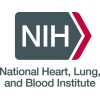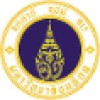
Immunogenicity and Safety of DTPa-HBV-IPV/Hib Compared to DTPa-IPV/Hib and HBV Administered Concomitantly...
Hepatitis BDiphtheria4 moreThis study will assess the immunogenicity of GlaxoSmithKline (GSK) Biologicals' (formerly SmithKline Beecham Biologicals') DTPa-HBV-IPV/Hib (Infanrix hexa™) vaccine compared to the separate administration of DTPa-HBV-IPV (Infanrix™ penta) and Hib (Hiberix™) vaccines administered at 3 and 5 months of age.

Early Response to Interferon Combined Short-Term Nucleoside Analogue Therapy in HBeAg(+) Chronic...
Hepatitis BChronicFor HBeAg(+) patients, interferon is used for 12 weeks. On 12th week of treatment, If HBV DNA is undetectable (<1000 copies/ml), interferon is continued alone for one year. If HBV DNA is still positive, nucleoside analogue is added for 3 months. After nucleoside analogue is added for 3 months, HBV DNA is tested again. If negative, stop nucleoside analogue and use interferon alone for another 6 months or longer. If HBV DNA is still positive, change to another nucleoside analogue or add another nucleoside analogue.

Prophylactic Use of Entecavir for Non-Hodgkin's Lymphoma Patients With Resolved Hepatitis B
Non Hodgkin's LymphomaHepatitis BHepatitis B (HBV) reactivation and hepatitis flare induced by cytotoxic chemotherapy is common in cancer patients who have chronic HBV infection. Lymphoma patients who had previous infected by HBV but negative for HBsAg have a the risk of HBV reactivation during chemotherapy, but prophylactic antiviral treatment is not a routine by current American Association for the Study of Liver Diseases (AASLD) guideline. Prophylactic entecavir might reduce the risk of HBV reactivation in such patients.

Interruption of Maternal-to-Infant Transmission of Hepatitis B by Means of Hepatitis B Immune Globulin...
Hepatitis BHepatitis3 moreTo evaluate whether hepatitis B immune globulin with a high level of antibody against the hepatitis B antigen would be capable of interrupting maternal-fetal transmission of hepatitis B virus, the single most important route of hepatitis spread in the entire Third World.

A Study in Chronic Hepatitis B e-Antigen Negative Participants After Discontinuation of Nucleos(t)Ide...
Hepatitis BChronicThe purpose of this study is to assess the incidence of participants who reach hepatitis B surface antigen (HBsAg) seroclearance after discontinuing nucleos(t)ide analog (NA) therapy in participants with HBsAg less than or equal to (<=) 100 international units per milliliter (IU/mL) and participants with HBsAg greater than (>) 100 IU/mL to <= 500 IU/mL at baseline.

Heplisav-B Revaccination for Hepatitis B Vaccine Nonresponders
HIV InfectionsHepatitis B1 moreThe goal of this natural history study is to examine the immune responses to the Heplisav-B vaccine in Veterans living with HIV who were non-responders to prior HBV vaccination. A comparison group of HBV vaccine nonresponders without HIV infection will be enrolled to characterize the HIV-associated immune alterations that affect vaccine response. The investigators hypothesize that TLR9-mediated innate immune stimulation with Heplisav will elicit HBV seroprotection despite prior vaccination failures in persons living with HIV, compared to HIV uninfected individuals. Participants eligible for Heplisav-B vaccination will be asked to provide blood samples at multiple timepoints before and after their vaccination.

Steatohepatitis in Chronic Hepatitis B
Fatty LiverChronic Hepatitis bFatty liver disease is increasingly recognized in patients with chronic hepatitis B (CHB). Whether concurrent fatty liver disease affects the long-term outcomes of CHB is unclear. The investigators performed a longitudinal study to investigate the prognostic relevance of concurrent fatty liver disease for patients with CHB receiving antiviral therapy.

Study to Evaluate the Prevalence of Hepatitis C in Spain in 2015 (PREVHEP)
Hepatitis CHepatitis BThe hypothesis of this investigation stresses that the current understanding of the prevalence of HCV infection in the general population and in different subgroups will serve to lay out medium- and long-term measures for action geared toward reducing the disease burden through preventive, research, screening and therapeutic measures. Aim: To determine the prevalence of seropositivity and chronic infection with the HCV and to analyze the associated factors. To analyze and infer different screening strategies for HCV infection based on the at-risk groups/cohorts of elevated prevalence detected. to assess the efficiency of screening strategies and the subsequent cost-effectiveness of treatment in the general population

HBV Vaccination in HIV-infected Adults
Hepatitis B VaccinationHIVThe finding of isolated hepatitis B core antibody (isolated HBc) in absent of recent active hepatitis could cause by several scenarios, including false positive, remote infection without viremia, and occult infection with low viremia. Hepatitis B virus (HBV) vaccine booster could be a great prevention strategy for those who do not have HBV viremia. There is no standard consensus for management of this issue especially among HIV infected population. In addition, prior studies revealed that HIV-infected individuals had lower immunologic response to HBV vaccine than general population. This study intends to compare the immune response and safety of 4- versus 3-standard dose of hepatitis B virus vaccination in HIV-infected adults who has isolated HBc. The immunologic response will be evaluated after the participants receive vaccination.

A Prospective Study of HBV Immunity and HBV Vaccination in Patients With NAFLD in Canada
Non-Alcoholic Fatty Liver DiseaseHepatitis B1 more(1) Due to missed childhood vaccination programs, the majority of adult patients with NAFLD in Canada do not have immunity to hepatitis B. (2) Adults with NAFLD who receive the HBV vaccine have reduced immunogenic responses in the setting of obesity (i.e., protective anti-HBs titres). Aims: (1) To determine the sero-prevalence of immunity against hepatitis B in a cohort of prospectively evaluated adult NAFLD patients. (2) To prospectively determine HBV vaccine responses (anti-HBs titres) in adult NAFLD patients.
